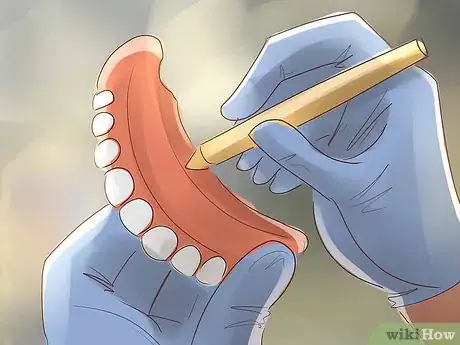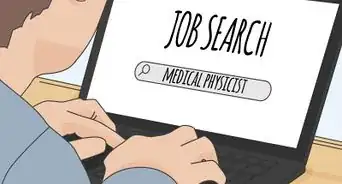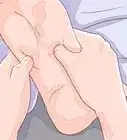This article was co-authored by Shayne Guffey, DMD. Dr. Shayne Guffey, DMD is a Dentist and the owner of Mountain View Family Dental in Mesa, Arizona. With over 20 years of experience, Dr. Guffey specializes in family dentistry and cosmetic dentistry. He earned his Doctor of Dental Medicine (DDM) from Oregon Health & Science University. Additionally, he’s a professional member of the Academy of General Dentistry and the Dental Organization for Conscious Sedation.
There are 24 references cited in this article, which can be found at the bottom of the page.
wikiHow marks an article as reader-approved once it receives enough positive feedback. In this case, 88% of readers who voted found the article helpful, earning it our reader-approved status.
This article has been viewed 160,223 times.
Orthodontists are dental specialists who correct improper alignment and straighten teeth. Their work can help patients achieve beautifully straight teeth and fix problems that might interfere with oral health. Becoming an orthodontist is a grueling process that requires four years of undergraduate study, four years of dental school, and at least 2 years of residency. If you're up to the challenge, though, you can have a fulfilling career helping patients achieve beautiful smiles!
Steps
Preparing for Dental School
-
1Take the right undergraduate courses.[1] Attend a four-year college to earn your Bachelor's degree and take courses that will prepare you for dental school. The best thing you can do is talk to your academic advisor to help you choose your coursework. While there is no specific major needed for admission, you will need background in specific subjects to pass the Dental Admission Test (DAT). Dental schools will also look for the following classes on your transcript when considering your application:
- Required: Biology with Lab; Inorganic Chemistry with Lab; Organic Chemistry with Lab; Physics with Lab; An English class with a writing focus
- Recommended: Anatomy; Biochemistry; Psychology; Mathematics
- Unrelated courses that make you a stronger candidate: Business; A foreign language; humanities or social science courses
-
2Plan your undergraduate years wisely.[2] It's not enough to just take the recommended classes. To best prepare yourself for the DAT and admittance, you have to be smart about the order in which you take them. Some of the courses required for entrance to dental school are not actually tested on the DAT. Take the tested courses first, and save the untested courses for later. Many students take the entrance exam in the summer before their junior year. Though you should create a plan with your academic advisor, a possible roadmap for your coursework is:
- Freshman year: Biology, Inorganic Chemistry, and general electives
- Sophomore year: Organic Chemistry, Biology electives, Math, and general electives
- Summer before Junior year: Take the Dental Admission Exam
- Junior year: Physics, English, and general electives
- Senior year: Biochemistry and general electives
Advertisement -
3Learn how the DAT exam is structured.[3] The Dental Admission Exam is split into 4 parts: 1. Survey of Natural Sciences, 2. Perceptual Ability Test (PAT), 3. Reading Comprehension, and 4. Quantitative Reasoning. The DAT is a one-day test, so you will cover all four sections on the same day. You should read the American Dental Association's DAT Program Guide for detailed information about the exam before applying to take it.[4]
- Survey of Natural Sciences: You have 90 minutes to answer 40 Biology, 30 Inorganic Chemistry, and 30 Organic Chemistry short answer questions.
- PAT: You have 60 minutes to answer questions testing your spatial ability and logic. The 90 questions cover angle discrimination, cube counting, view recognition, 3D for development, and paper folding.
- Reading Comprehension: You have 60 minutes to answer 50 questions testing your ability to pull information from 3 different writing passages.
- Quantitative Reasoning: You have 40 minutes to answer 40 questions testing your knowledge of algebra, word problems, data analysis, quantitative comparison, and probability and statistics.
-
4Take a practice exam. You should begin preparing for the exam well ahead of time. You may find it helpful to take a practice exam before you begin studying, as this will help you evaluate your strengths and weaknesses. You can use that information to focus your studying hours in the areas where you need the most help. Though you have to buy practice exams from the American Dental Association, many students find the benefits outweigh the small cost.[5]
- The online practice test costs $37 as of 2015, and the print format practice test costs $27 + tax and shipping.
- You can purchase practice exams as often as you'd like throughout the studying process to see how you're improving.
-
5Find studying resources. There are many test-prep books, guide, and courses available to help you prepare for the exam. The most popular and widely available resources are available through Kaplan and the Princeton Review. Try to make friends with other pre-dental students who have already taken the DAT and ask for their advice on how to study for it. Ask for copies of any study guides they may have used or created for themselves.
- Note that the content of the Quantitative Reasoning section changed significantly in 2015. [6] Used or outdated guides from before 2015 will prepare you for information that is no longer on the exam, and will not prepare you for information that is now included in that section.
-
6Be disciplined in your test preparation. When you take classes, you have a teacher setting deadlines and making sure you stay on schedule. For the DAT, though, you'll have to self-motivate. Studying for the DAT is not going to be fun, especially when your friends are out having fun. But if you want to reach your goals, you have to dedicate yourself to test prep. Just passing the test isn't enough to get into dental school — you have to achieve a highly competitive score.
- Create a study schedule for yourself. If you just say that you'll study when you have spare time, you'll find you suddenly have no time to spare!
- Set aside at least an hour every weekday to study for the test. You should study at the same time every Monday, and every Tuesday, etc.
- Set aside more time on the weekends.
-
7Apply to take the DAT.[7] You should apply for the exam 60-90 days before you actually want to take it. To apply for the exam, you will first have to create a DENTPIN®, which stands for Dental Personal Identification Number.[8] Once you've received your DENTPIN, use it to apply for the DAT on the American Dental Association's website.[9]
- Test registration costs $25 if you register 31+ business days (excludes weekends and holidays) before the requested date. It costs $60 if you register 6-30 businesses days before the date, and $100 if you register 1-5 days before the test date.
-
8Take the Dental Admission Test.[10] Make sure you know how to get to the testing site and find parking, etc. beforehand so you don't run late on the big day. Get to the test site early on test day to let yourself settle in and get used to your settings. You will need to show two forms of identification to be admitted to the exam, including one government-issued photo-ID.
- The test computer allows you to "Mark" questions you're not sure about to come back to them. Answer all the questions you're confident about first to make sure you get all the points you can. Return to the harder questions after that.[11]
- Make good use of the break you'll be given at the half-way point. Eat a snack to re-energize yourself, and stretch your legs and back. Four hours is a long time to sit in one place!
- You can take the DAT up to 3 times, total, waiting 90 days between each exam. If you want to retake the exam to try for a higher score, just get back to studying and redouble your efforts.
Getting Your Dental Education
-
1Apply to dental schools.[12] [13] Most dental schools use the American Dental Education Association's website for the application process, though individual programs will link to their specific application site.[14] Apply to dental schools during the summer after your Junior year, when you have your final DAT scores. Admissions committees take the following into consideration when evaluating dental school applicants:
-
2Pay a deposit for a spot in dental school.[17] If you're offered enrollment in one of the programs you applied to, you may be asked to put down a deposit to reserve your spot. Most dental schools send out their offers in December.
- As soon as you know where you're going, contact the program's financial aid office to begin the application process for financial aid.[18] In many cases, financial aid works on a first-come-first-serve basis.
-
3Study hard in dental school. You will earn either a Doctor of Dental Surgery (DDS) or Doctor of Dental Medicine (DDM), both of which qualify you to be a dentist. During the first two years of these 4-year programs, you receive classroom instruction on foundational science. During the last two years, you get hands-on experience through clinical rotations.[19] Curricula vary from program to program, but most programs require some study of orthodontia for graduation.[20] [21] You'll earn your specialized orthodontic training during your residency, after dental school.
-
4Study for and take the National Board Dental Examination. The DAT isn't the only test you need to pass to become an orthodontist! After you graduate from dental school, you must take the NBDE to either get your license to practice or, in many cases, to apply for postdoctoral residencies. The NBDE is a two-part exam that takes three days to complete.
- NBDE I: You will answer 400 questions on Anatomic Sciences; Biochemistry-Physiology; Microbiology-Pathology; and Dental Anatomy and Occlusion.[22]
- NBDE II, Day 1: You will answer 400 questions on . Endodontics; Operative Dentistry; Oral and Maxillofacial Surgery/Pain Control; Oral Diagnosis; Orthodontics/Pediatric Dentistry; Patient Management; Periodontics; Pharmacology; and Prosthodontics
- NBDE II, Day 2: You will answer 100 case-based questions about what to do with actual patients. The exam will provide a summary of the patient's health and history; dental chart; diagnostic radiographs, and clinical photographs. From that information you must interpret the information; make a diagnosis; select materials, technique and armamentarium; treat the patient; evaluate his/her progress and complications; and establish procedures for prevention and maintenance.[23]
-
5Complete a residency in orthodontia. After you've graduated from dental school, you must apply for a residency in your field of specialty — orthodontics. Residencies last a minimum of 2 years, but often last longer. There are two systems used to find postdoctoral education: the Postdoctoral Application Support Service (PASS) and the Postdoctoral Dental Matching Program (MATCH).[24] The programs you apply for may use one or the other, or even both, so you should sign up for both systems.[25] [26]
- Postdoctoral programs will ask for your undergraduate and dental school transcripts, National Board Dental Exam scores, three or more letters of recommendation, work experience, and a personal statement of career goals.[27]
Getting Licensed and Certified to Work
-
1Research licensing requirements in your area. The requirements to practice as an orthodontist varies from state to state. Most states only ask you to get a dental license, which allows you to practice general dentistry or a specialty, like orthodontics. But some states, like Michigan, Oregon, and Idaho, require both a dental license and an orthodontic license.
- Contact your state's dental board to find out which license(s) you need before you can begin your practice.[28]
- Find out what you need to qualify for a license. In most cases, you will need dental school transcripts, a passing score from a national or regional dental board exam, and completion of an orthodontic residency.
-
2Apply for your dental and/or orthodontic license. Depending on where you live, the application fee can be anywhere from $300-$600. You will also have to submit to a background check and drug testing.
-
3Take and pass your licensing exam. Even though you've already passed your DAT and NBDE, you still have to prove to the state that you meet their standards before you can practice. The exam varies from state to state. Contact your state dental board for information on the test's content and structure, and for guides to help you prepare.
- Once you pass the licensing exam, you can legally practice as an orthodontist in the state.
- If you move to a different state, you will have to repeat the licensing process. Some states will exempt you from the licensing exam if you passed it in another state, though.
-
4Consider getting board-certified. You don't have to be certified by the American Board of Orthodontics to practice — in fact, only about 1% of orthodontists are. However, getting certified can set you apart from other orthodontists in your area because it shows that you have passed yet another bar of excellence.
- You will have to take and pass an exam of 240 written questions, as well as a clinical exam.
- Certification expires every ten years. You must take and pass a renewal exam every decade to prove you are still able to practice at a high standard.
References
- ↑ http://study.com/articles/Orthodontists_Job_Information_and_Requirements_for_Becoming_an_Orthodontist.html
- ↑ http://crushthedatexam.com/when-to-take-the-dat/
- ↑ http://www.asdanet.org/predental/dat-prep.aspx
- ↑ http://www.ada.org/~/media/ADA/Education%20and%20Careers/Files/dat_examinee_guide.ashx
- ↑ http://www.ada.org/en/education-careers/dental-admission-test
- ↑ http://www.asdanet.org/predental/dat-prep.aspx
- ↑ http://www.ada.org/en/education-careers/dental-admission-test/
- ↑ http://www.ada.org/en/education-careers/dentpin/
- ↑ https://dts.ada.org/login/login__ADA.aspx
- ↑ http://www.asdanet.org/predental/dat-prep.aspx
- ↑ http://www.asdanet.org/predental/dat-prep.aspx
- ↑ http://www.ada.org/en/coda/find-a-program/search-dental-programs/dds-dmd-programs
- ↑ http://www.ada.org/en/education-careers/careers-in-dentistry/be-a-dentist/applying-for-dental-school
- ↑ http://www.adea.org/GoDental/Application_Prep/The_Application_to_Dental_School_ADEA_AADSAS/Personal_statement.aspx
- ↑ http://www.adea.org/GoDental/Application_Prep/The_Application_to_Dental_School_ADEA_AADSAS/Personal_statement.aspx
- ↑ http://www.adea.org/GoDental/Application_Prep/The_Application_Process/Timeline_to_apply.aspx
- ↑ http://www.adea.org/GoDental/Application_Prep/The_Application_Process/Timeline_to_apply.aspx
- ↑ http://www.adea.org/GoDental/Money_Matters/Financing_Options.aspx
- ↑ http://study.com/articles/Orthodontist_Degree_Program_Information.html
- ↑ https://www.dental.upenn.edu/admissions-academics/dmd-program/dmd-curriculum/curriculum-first-year/
- ↑ http://dental.ufl.edu/education/dmd-program/curriculum-overview/
- ↑ http://www.ada.org/~/media/JCNDE/pdfs/nbde01_examinee_guide.ashx
- ↑ http://www.ada.org/~/media/JCNDE/pdfs/nbde02_examinee_guide.ashx
- ↑ http://www.ada.org/en/education-careers/dental-student-resources/career-options-after-dental-school/understanding-advanced-dental-education/the-application-process
- ↑ http://www.adea.org/PASSapp/
- ↑ https://natmatch.com/
- ↑ http://www.ada.org/en/education-careers/dental-student-resources/career-options-after-dental-school/understanding-advanced-dental-education/the-application-process#overview
- ↑ http://www.ada.org/en/education-careers/dental-student-resources/dental-examinations-and-licensure-for-students/understanding-licensure/support-and-resources/state-dental-boards
About This Article
To become an orthodontist, take relevant courses during college, such as biology and inorganic chemistry. Additionally, take your Dental Admissions Test, which you'll need to pass to get into dental school, in your junior year of college. Once you graduate from dental school, take the National Board Dental Examination to get your license. Additionally, complete a residency in orthodontics to gain practical experience in your chosen specialty. For tips on how to prepare for your dental school exams, read on!















































































Medical Disclaimer
The content of this article is not intended to be a substitute for professional medical advice, examination, diagnosis, or treatment. You should always contact your doctor or other qualified healthcare professional before starting, changing, or stopping any kind of health treatment.
Read More...